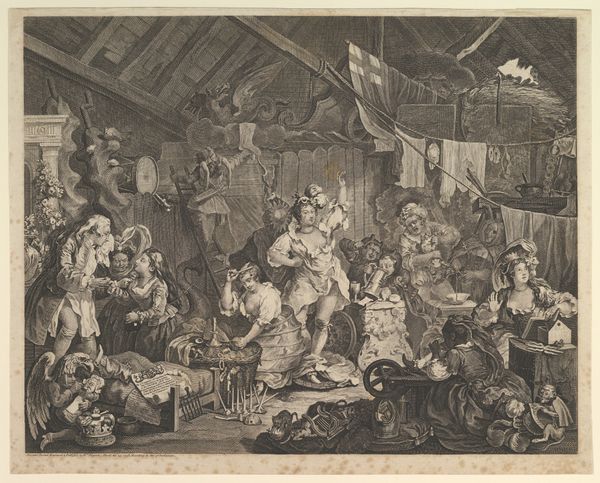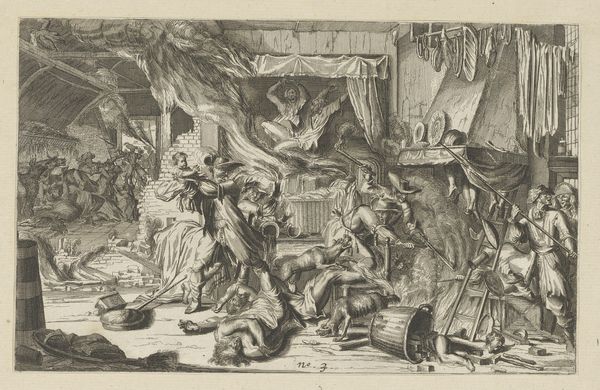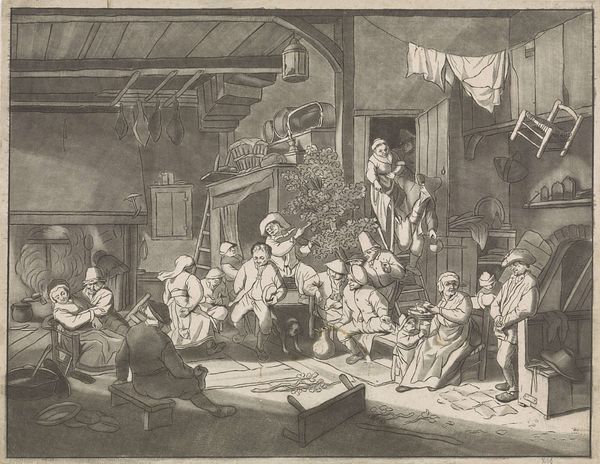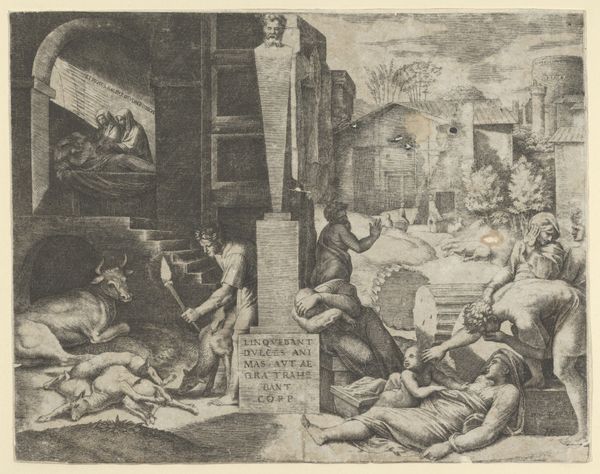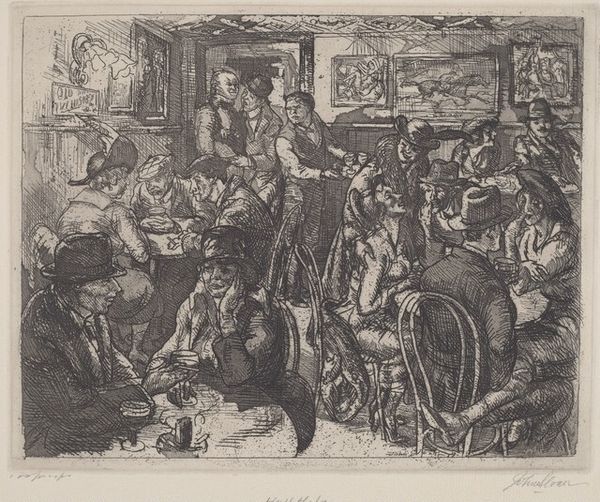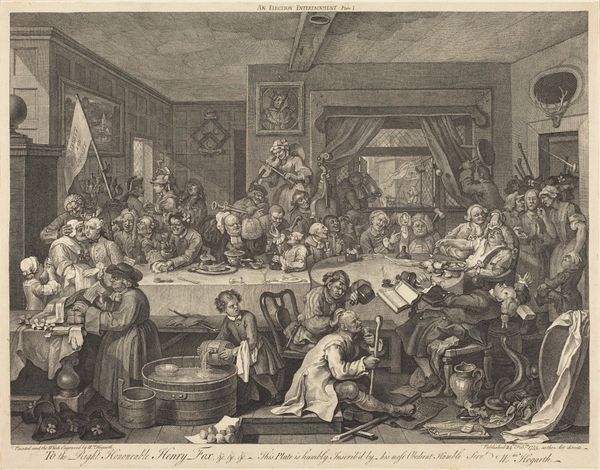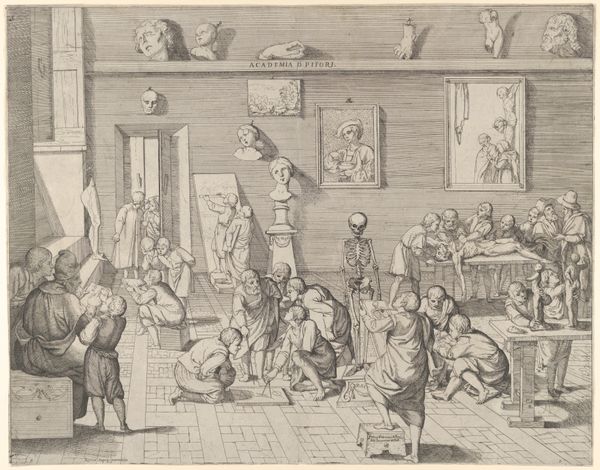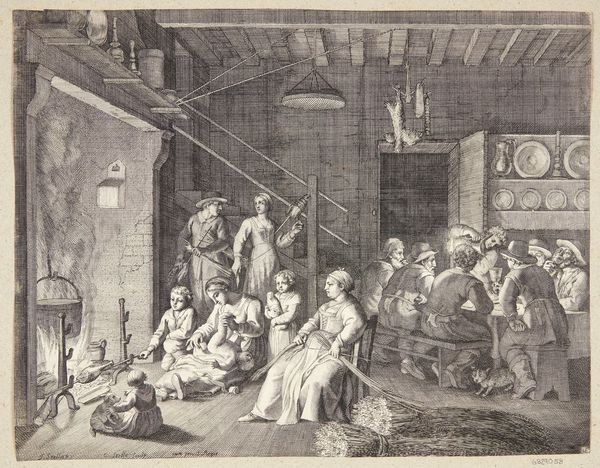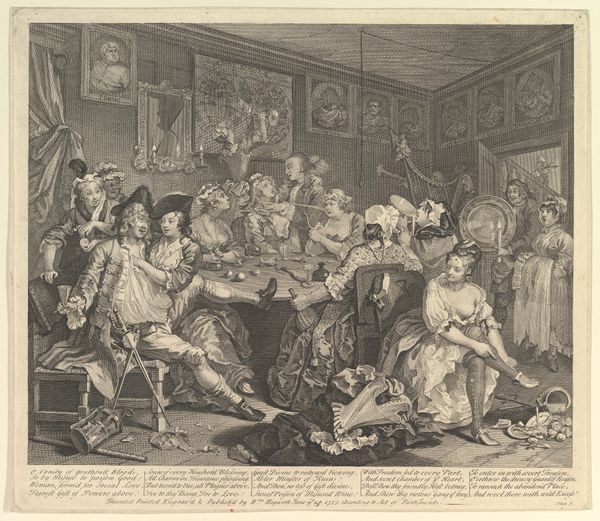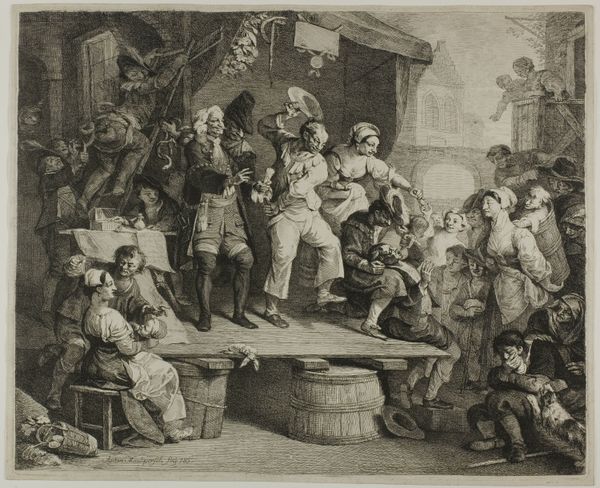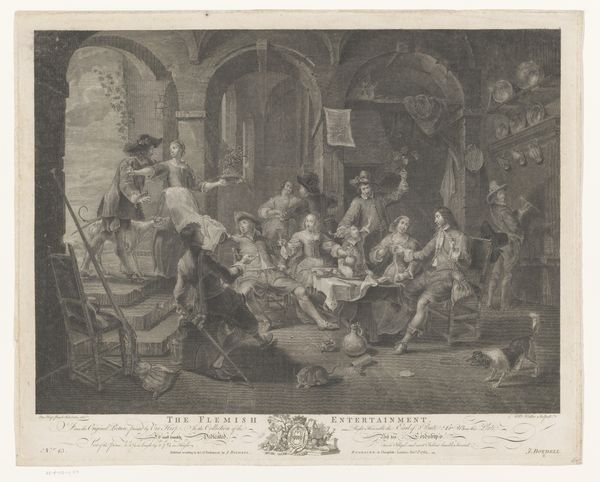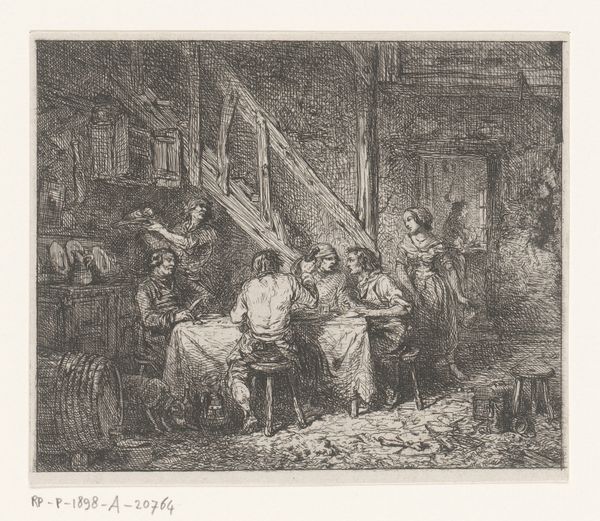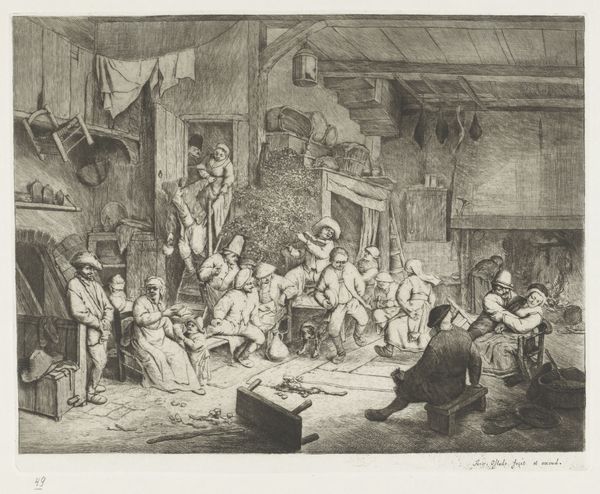
drawing, print, engraving
#
portrait
#
drawing
#
narrative-art
#
baroque
# print
#
genre-painting
#
engraving
Dimensions: sheet: 15 7/8 x 22 7/16 in. (40.3 x 57 cm)
Copyright: Public Domain
Editor: This is "Strolling Actresses Dressing in a Barn" by William Hogarth, made in 1738. It’s an engraving, and it feels almost chaotic. So much is going on, all crammed into this single space. What jumps out at you? Curator: The chaos you mention is key. Hogarth wasn't just depicting actresses preparing; he was commenting on the social status – or lack thereof – afforded to women in the theater. Consider where this scene is set: a dilapidated barn. This location starkly contrasts with the perceived glamour associated with the stage. Hogarth shrewdly used imagery to challenge the elite. Notice the satirical details that seem like caricature; how might this play to the public's perception of theater? Editor: I see it now. The exaggerated costumes and crowded conditions feel…degrading, almost. Was theater seen as disreputable at the time? Curator: Absolutely. Think about the patronage system. Theaters, especially those outside royal sanction, were often viewed with suspicion by those in power and certain segments of society. Hogarth, through this engraving, makes the behind-the-scenes lives of these actresses public and thus open to scrutiny and likely judgement, a theme quite visible throughout much of his engravings and paintings. The inclusion of children and animals in a disorderly dressing room would also fuel those judgements, as stage performances were a trade lacking regulation, so anybody could enter into this job market and perform on stage. Hogarth is very keen in his observations. Editor: It's like he’s using humor to make a serious point about the position of women in the arts and, more broadly, in society. It's much more than just a snapshot of a dressing room. Curator: Precisely. And consider the impact of printmaking. Hogarth could disseminate these images widely, engaging a broad audience in social commentary. Editor: This piece really opens my eyes to how art can reflect, and even influence, societal views. Curator: Indeed. Hogarth used the power of imagery to invite public discussion about morality, class, and the arts in 18th-century England. The work still resonates with how artistic practice is seen, displayed and perceived within the art market nowadays.
Comments
No comments
Be the first to comment and join the conversation on the ultimate creative platform.
